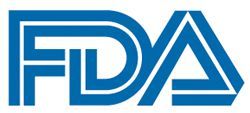News
Article
FDA Approves Lumisight and Lumicell DVS for Residual Breast Cancer Detection
Author(s):
The FDA has approved the optical imaging agent Lumisight and the Lumicell Direct Visualization System for use in fluorescence imaging in breast cancer.
FDA

The FDA has approved the optical imaging agent Lumisight (pegulicianine) and the Lumicell Direct Visualization System (DVS) for use as fluorescence imaging in adult patients with breast cancer as an adjunct for the intraoperative detection of cancerous tissue within the resection cavity following removal of the primary specimen during lumpectomy surgery.1
Together, Lumisight and Lumicell DVS are referred to as LumiSystem.
Lumisight demonstrated an 84% diagnostic accuracy in detecting residual cancer in real-time, identifying residual disease that may have been missed during lumpectomy and potentially sparing some patients from additional surgeries.
“We are immensely proud of the dual approval of Lumisight and Lumicell DVS—we believe this is the first drug-device combination product approved in over a decade to have followed both of the FDA's most stringent new drug application and premarket approval review processes,” Howard Hechler, president and chief operating officer of Lumicell, stated in a news release. “With the FDA’s approval, LumiSystem is now the first and only imaging combination product capable of detecting cancerous tissue where it matters most, inside the breast cavity.”
In March 2024, the FDA's Medical Imaging Drugs Advisory Committee voted 16 to 2, with 1 abstention, in favor of the benefit-risk profile of Lumisight in detecting cancerous tissue during breast-conserving surgery. The recommendation was based on an independent review of the imaging agent utilized with the Lumicell DVS, examining efficacy data for more than 350 patients included in the pivotal phase 3 INSITE trial (NCT03686215) and more than 700 patients enrolled across 6 studies conducted at academic and community cancer centers, including a phase 2 feasibility study (NCT03321929).2
INSITE was a prospective study that assessed margin status with or without Lumisight in patients with stage 0 to III breast cancer.3
Among 357 patients who received Lumisight, margins guided by the optical imaging agent allowed for the removal of tumors left behind after standard lumpectomy in 27 patients (7.6%; 95% CI, 5.0%-10.8%). In 19 of these 27 patients, margins were negative on standard lumpectomy pathology evaluation, and the residual cancer would have been unrecognized without Lumisight.
Additionally, 62 patients (19.7%) had at least 1 positive margin. Second surgeries were avoided with the use of Lumisight in 9 patients (14.5%) with positive margins.
A per-margin analysis demonstrated that the Lumisight specificity was 85.2% (95% CI, 83.7%-86.6%), which was higher than the prespecified lower-bound goal of greater than 60%. Notably, the sensitivity was 49.3% (95% CI, 37.0%-61.6%), which failed to meet the prespecified lower-bound goal of greater than 40%.
The study enrolled patients at least 18 years of age undergoing lumpectomy for stage I to III invasive breast cancer and/or ductal carcinoma in situ. Those receiving neoadjuvant therapy or undergoing margin re-excision following prior lumpectomy were not allowed to enroll.
Patients were randomly assigned 10:1 to the Lumisight group or control group. Lumisight was administered 2 to 6 hours prior to surgery. Notably, randomization was not designed to provide a control group to assess the performance of the optical imaging agent. Each patient who underwent Lumisight-guided surgery served as their own control, and evaluation was based on final margin pathology after standard surgery combined with additional imaging-guided cavity margins. Those assigned to the control group were only evaluated for safety.
During the study, 406 patients received 1.0 mg/kg of intravenous Lumisight followed by lumpectomy. In the 392 patients who were randomly assigned, 316 had invasive cancers, and 76 had in situ cancers.
The primary end points of the study were the percentage of patients in whom Lumisight-guided margins contained residual cancer after lumpectomy (success defined as greater than 3% for lower bound of the 95% CI); sensitivity, or the percentage of margins with tumor that were Lumisight positive; and specificity, or the percentage of margins with no tumor that were Lumisight negative. Secondary end points included the positive margin rate after removal of Lumisight-guided margins and the impact of Lumisight-guided margins on the volume of excised tissue.
Regarding safety, blue urine was observed in 367 patients who received Lumisight, which was expected with the blue color of the agent. Six patients (1.5%) had administration stopped due to adverse effects (AEs). Serious grade 3 AEs related to Lumisight were reported in 2 patients (0.5%), which included hypersensitivity (n = 1) and an anaphylactic reaction (n = 1).
All other AEs resolved, and patients underwent their scheduled, standard lumpectomies.
Hypersensitivity and anaphylaxis are identified with a boxed warning in Lumisight’s prescribing information. Before administering Lumisight, all patients should be assessed for any history of hypersensitivity reaction to contrast media or products containing polyethylene glycol, as these patients could have an increased risk for hypersensitivity reaction to the imaging agent.4
References
- Lumicell’s cutting-edge imaging platform receives historic FDA approval to illuminate residual breast cancer. News release. Lumicell. April 18, 2024. Accessed April 18, 2024. https://www.businesswire.com/news/home/20240418089547/en
- Lumicell announces FDA advisory committee's positive recommendation on the benefit-risk profile of Lumisight in the detection of cancerous tissue during breast conserving surgery. News release. Lumicell, Inc. March 6, 2024. Accessed March 9, 2024. https://lumicell.com/lumicell-announces-fda-advisory-committees-positive-recommendation-on-the-benefit-risk-profile-of-lumisight-in-the-detection-of-cancerous-tissue-during-breast-conserving-surgery/
- Smith BL, Hunt KK, Carr D, et al. Intraoperative Fluorescence Guidance for Breast Cancer Lumpectomy Surgery. NEJM Evid. 2023;2(7):EVIDoa2200333. doi:10.1056/EVIDoa2200333
- FDA approves imaging drug to assist in detection of cancerous tissue following lumpectomy. FDA. April 18, 2024. Accessed April 18, 2024. https://www.fda.gov/drugs/news-events-human-drugs/fda-approves-imaging-drug-assist-detection-cancerous-tissue-following-lumpectomy









